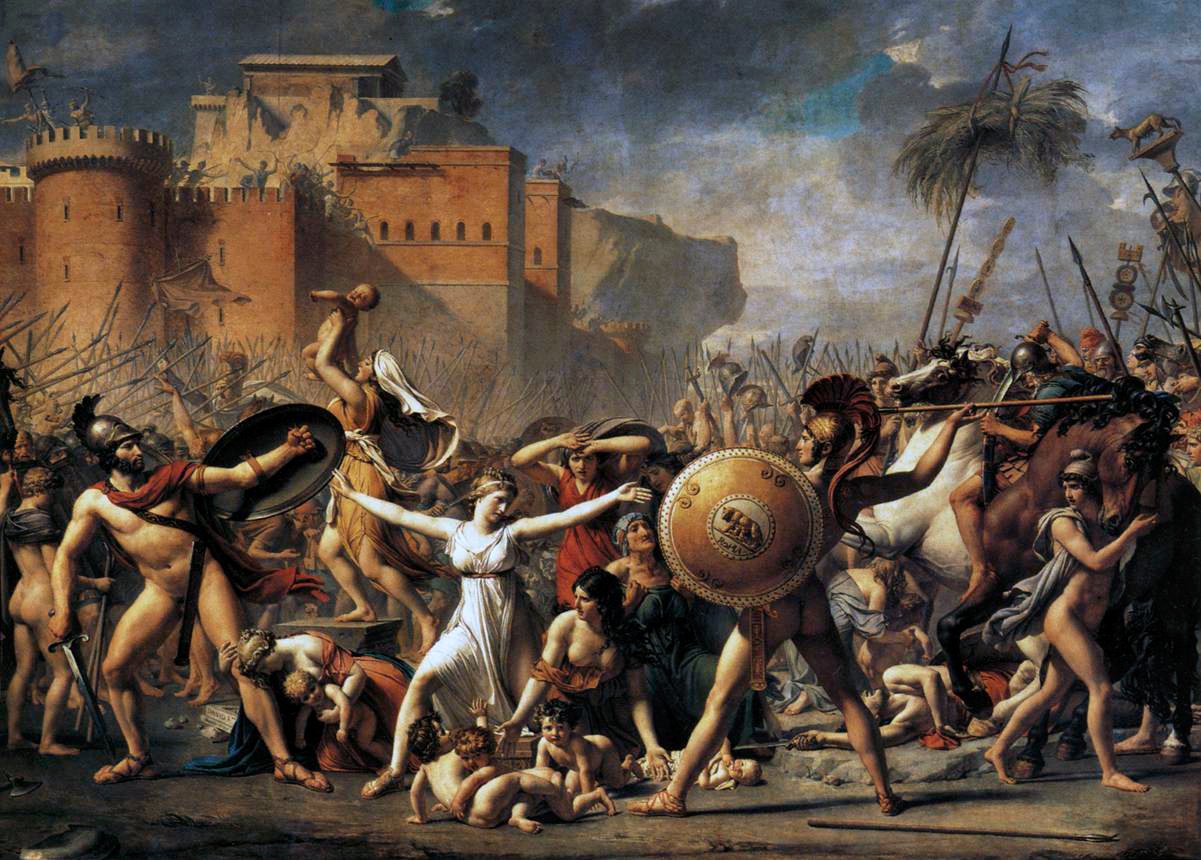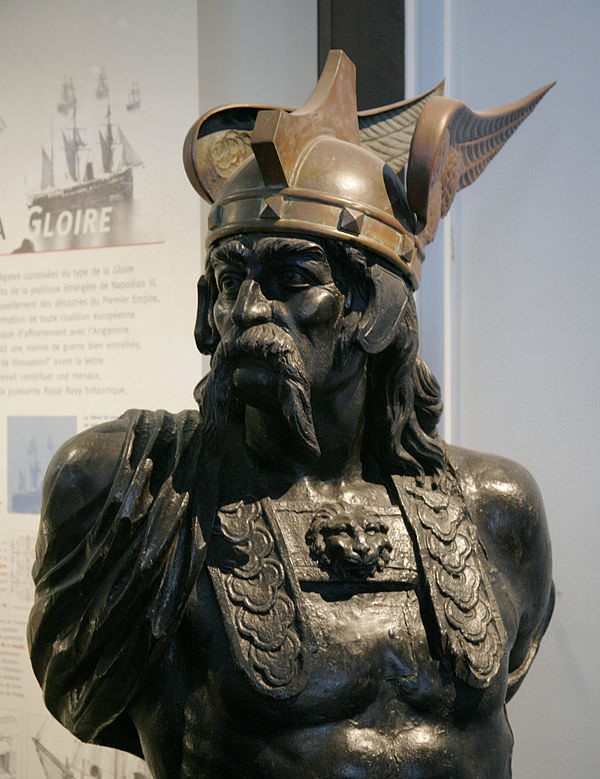
Thermopylae is most famous for the battle which took place there in 480 BC. It was a battle in which the heavily outnumbered three hundred Spartans led a coalition of Greeks against the formidable army of the Persian King Xerxes. However, this would not be the last time that the fate of ancient Greece would come into question at the “Hot Gates.” In 279 BC, the Greeks again faced an existential threat—this time posed by the Celts.
The Celts were an ancient people who mainly lived throughout Western and Northern Europe. Those who invaded Greece in the third century BC were likely a coalition of Celtic tribes consisting of the Trocmi, Tolistobogii, and Tectosages.
The Celts are also commonly known as the Gauls or referred to as the La Tène culture in modern historiography. The ancient Greeks referred to them as the Keltoi (Κελτοί) or Galatai (Γαλάται).
The Celts were already familiar to the Greeks before the invasion. Wine, olive oil, and pottery was imported by Celts keen on Greek products. Contact was especially frequent between the inhabitants of the Greek colony of Massallia (modern-day Marseille) and the local Celtic tribes.
The Celts invade Macedon
Despite the establishment of Greco-Celtic trade relations and even a non-aggression pact between Alexander the Great and the Celtic tribes who had settled in the Balkans, Greco-Celtic relations took on a markedly less positive tone in the early 3rd century.
The first Celtic incursion was in 298 BC. The Celtic army was likely drawn to Northern Greece in search of plunder. However, they were decisively defeated by Cassander, the king of Macedon, and one of the generals, or diadochi in Greek, who succeeded Alexander the Great.
In 280 BC, the Celts launched another invasion. Their army was more numerous this time and may have consisted of up to 150,000 infantry and 20,000 cavalry. Mercenaries from Illyria and Thracia may also have joined the expedition.
King Ptolemy of Macedon mustered his forces to meet the Celts. His epithet, Ceraunus (Κεραυνός), meaning “Thunderbolt,” was earned on account of his impetuous behavior. Ptolemy’s rashness cost him his life. He attacked the Celts without waiting for sufficient reinforcements and was killed in battle. When his troops saw the Celts parading their king’s head on a pike, they broke and ran.
The Greeks assemble at Thermopylae
With the Macedonians defeated, there was nothing blocking the Celts from advancing further into Southern Greece. Brennus, a charismatic chieftain in the Celtic army, took command over a substantial portion of the force and marched south through Thessaly.
As news spread of the Celtic advance, the usually quarrelsome Greek city-states were forced to band together or face annihilation. The coalition of Greeks decided to block the Celts from advancing at Thermopylae.
The Greeks assembled approximately forty thousand men to defend the pass at Thermopylae. The Aetolian League provided most of the soldiers. They were joined by the Phocians, Athenians, Boeotians, Locrians, and Megarians among others. According to Pausanias, an Athenian called Callippus was in command.
Before Brennus could reach Thermopylae, the Greeks tried to slow his army’s advance by sending a smaller force of light infantry and cavalry to destroy the bridges over the Spercheios River. However, Brennus sent his own advance party under the cover of darkness to swim across the river, and the Greeks were forced to withdraw. The local Malians did not want further trouble with the Celts and promptly repaired the bridges.
The Battle of Thermopylae
At Thermopylae, Brennus began his assault on the Greek position. The Greeks had chosen this spot well. On one side, the mountains protected the Greek flanks while, on the other, they were protected by the sea. The narrow pass acted as a funnel, which nullified Brennus’ numerical advantage. The rocky and uneven terrain also made it impossible for the cavalry to operate.
Brennus was therefore forced to send his infantry in a head-on charge against the Greeks. According to Hieronymus of Cardia, they “rushed on their enemy with the rage and fury and blind courage of a wild beast.”
Celtic courage was not enough to compensate for a myriad of tactical disadvantages. The Greek hoplites were more heavily armored than their foes, and the Celts could not maneuver to outflank them.
The Greeks had also brought their warships within range of the shore. They were able to pelt the enemy with arrows and javelins whilst the Celts struggled in vain to break the Greek phalanx. After sustaining heavy losses, the Celts were forced to withdraw.
Six days later, Brennus sent a detachment to find a path around Thermopylae via Mount Oeta. Along the route was a sanctuary to the goddess Athena in Trachis. Tempted by the opportunity for loot, the Celtic detachment attacked the sanctuary.
Standing in their way was a force of Phocians commanded by Telesarchus. He was killed in the battle, but the Greeks successfully defended the temple and the Celts were forced to flee without any plunder. Pausanias, a geographer of the second century AD, later described Telesarchus as “a man devoted, if ever a man was, to the Greek cause.”

Brennus outflanks the Greeks at Thermopylae
Brennus now had a dilemma. He knew that he could not break the Greek force with a frontal assault. Instead, he concocted a plan to draw the Aetolian contingent away from the main Greek army.
To this end, Brennus sent two of his officers with a detachment of warriors back across the Spercheios through Thessaly towards the Aetolian town of Kallion. Pausanias later wrote that the inhabitants there were “subjected with wanton violence to every form of outrage, by men as remote from mercy as they were from love.”
When news of the massacre at Kallion reached Thermopylae, the Aetolians left immediately to defend their towns and cities. Around the same time, another misfortune befell the Greeks; Brennus discovered a path that could be used to bypass the Greek frontline.
Armed with this intelligence, Brennus split his force in two and personally led the contingent through the mountain pass towards the Greek rear. The Phocians were guarding this exposed path, but a thick mist had descended upon the mountain that morning, and they did not spot the Celts until they were right upon them.
Some of the Phocians survived and were able to warn the remaining Greek force at the pass. As Brennus’ force approached, his men signaled to the other half of his army that it was time to launch the attack. The Greeks were now pinned between two Galatian forces.
Unlike the Spartans and Thespians, who made a heroic last stand at Thermopylae, this time the Greeks had an escape plan. They withdrew to the shoreline, where they were picked up by the fleet and whisked away to regroup.
Aftermath
After the Battle of Thermopylae, Brennus marched on Delphi, the beating heart of the ancient Greek religion. At the Battle of Delphi, however, Brennus and his army was utterly crushed.
Brennus was injured in the battle and later committed suicide. The Celts were pursued by the Greeks all the way back to the Spercheios River, where many were ambushed and killed.
Later on, many of the survivors of Brennus’ army joined another expedition, and the Celts crossed into Asia Minor, where they became known as the Galatians. One of their main settlements was Ancyra, which is called Ankara today. It is the modern capital of Turkey.
See all the latest news from Greece and the world at Greekreporter.com. Contact our newsroom to report an update or send your story, photos and videos. Follow GR on Google News and subscribe here to our daily email!



